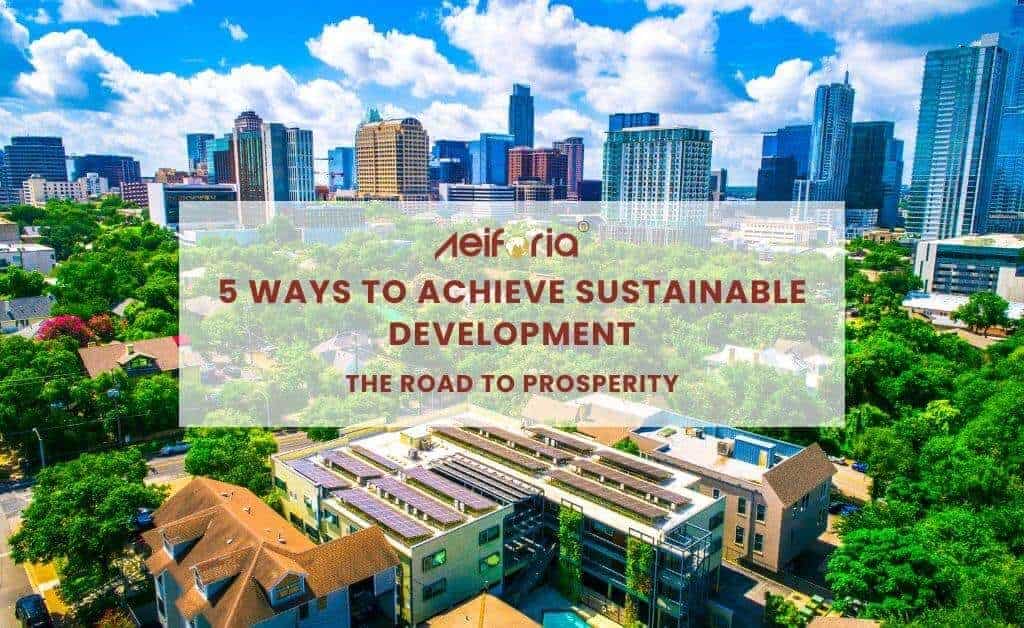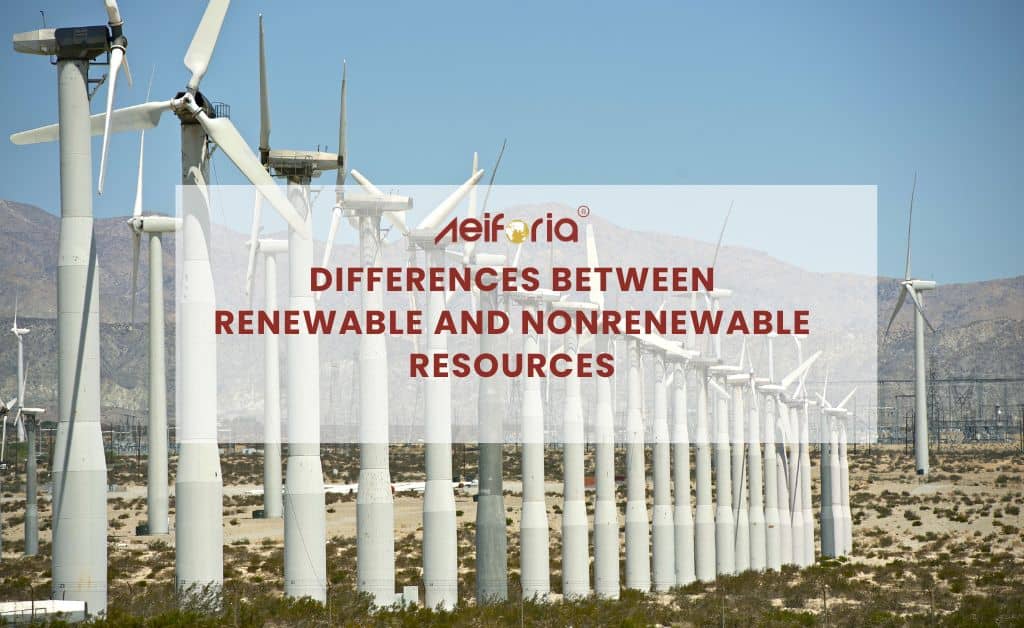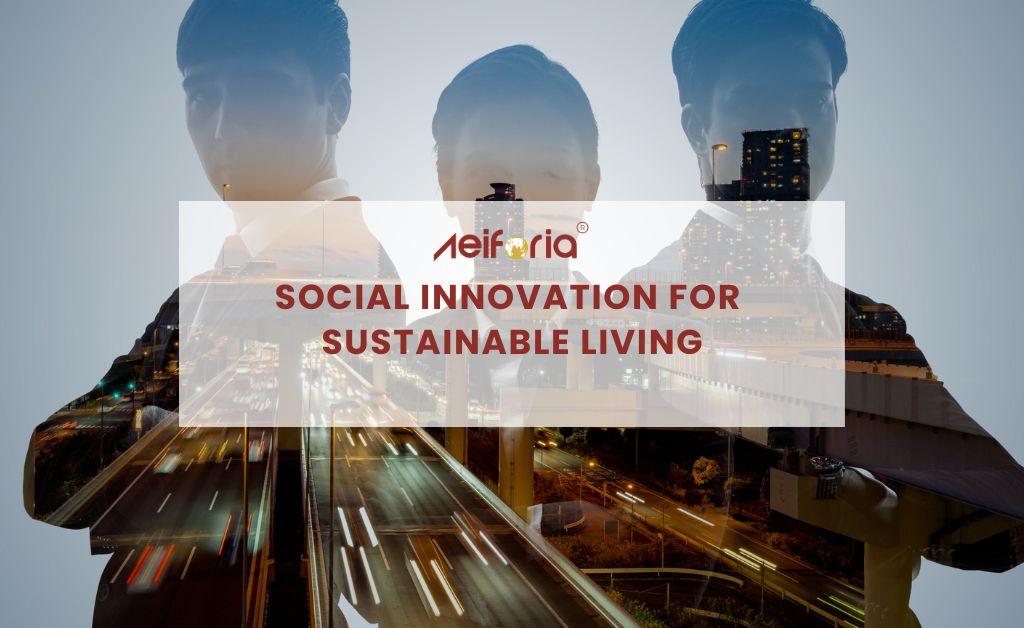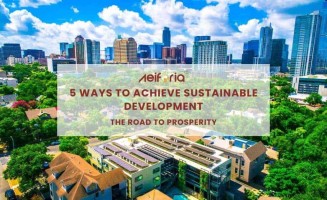
5 Ways to Achieve Sustainable Development
Sustainable development is the key to securing a prosperous and harmonious future for our planet and its inhabitants. It's a vision that balances economic growth, social well-being, and environmental protection. To transform this vision into reality, we need practical strategies that guide us toward sustainability.
This blog post will discuss five practical methods to attain sustainable development.
5 Effective Ways to Achieve Sustainable Development
Promote Green Infrastructure and Sustainable Urban Planning
Most of the world's population now resides in urban areas, making sustainable urban development a critical component of overall sustainability. One way to achieve this is by promoting green infrastructure and sustainable city planning.
This includes initiatives such as expanding green spaces, building public transportation systems, creating pedestrian and bike-friendly pathways, and designing energy-efficient buildings. These efforts improve urban living conditions, reduce pollution, and enhance the quality of life for city dwellers.
Green spaces like parks and rooftop gardens not only make cities look beautiful but also bring a lot of benefits to the environment. It helps absorb rainwater, reducing the risk of flooding and enhancing water quality. Additionally, green spaces offer recreational opportunities, improve air quality, and support biodiversity, making cities more pleasant and sustainable.
Sustainable urban planning goes beyond just green spaces. It includes zoning regulations encouraging mixed land use, minimizing the need for long commutes and reducing greenhouse gas emissions.
The integration of public transportation systems and the development of pedestrian and bike-friendly infrastructure lessen the dependency on private vehicles, decreasing traffic congestion and air pollution.
Transition to Renewable Energy Sources
Transitioning to renewable energy is crucial for sustainability and reducing emissions. This not only mitigates climate change but also promotes energy security and creates job opportunities.
The energy transition is already underway in many parts of the world. Solar and wind energy installations have grown exponentially, driven by falling costs and government incentives. Wind turbines and solar panels, harnessing the power of nature, have become standard sources of electricity.
Hydroelectric power converts the kinetic energy of flowing water into electricity, making it a renewable energy source. While it is not without environmental impacts, careful planning and management can minimize ecosystem harm.
Adopting renewable energy technologies reduces greenhouse gas emissions, lessens our reliance on fossil fuels, and fosters energy independence. It also creates job opportunities in the renewable energy sector, contributing to economic growth.
Implement Sustainable Agriculture Practices
Agriculture is a fundamental pillar of global sustainability. Sustainable agriculture practices prioritize soil health, water conservation, and responsible use of fertilizers and pesticides. They also promote biodiversity and reduce the environmental impact of farming.
Implementing sustainable agricultural practices is vital for ensuring food security and protecting natural resources. Sustainable agriculture emphasizes soil conservation techniques, such as no-till farming, cover cropping, and crop rotation, to improve soil fertility and reduce erosion. Sustainable farming methods protect water quality and aquatic ecosystems by minimizing synthetic fertilizers and pesticides.
In addition, sustainable agriculture practices often incorporate agroforestry, where trees and crops are intermixed, creating more diverse and resilient farming systems. This approach promotes biodiversity, supports natural pest control, and improves soil health.
Advocate for Inclusive Social Policies
Achieving sustainable development requires addressing social inequalities and fostering inclusivity. Inclusive social policies encompass access to quality education, healthcare, and economic opportunities for all, regardless of socioeconomic background, gender, or ethnicity.
Education is a cornerstone of inclusivity. Access to good education is essential for people to learn and develop the necessary skills to actively engage in the community and workforce. It empowers people to make informed decisions and improve their well-being.
Healthcare is another critical aspect of social inclusion. Universal access to healthcare services ensures everyone can lead a healthy life and receive the medical care they need, regardless of financial circumstances.
Economic opportunities must also be distributed equitably. Progressive tax policies can help reduce income inequality by requiring higher-income people to pay a larger share of their tax earnings. Unemployment benefits and food assistance provide a safety net for people facing tough economic times. These programs help ensure that nobody is left behind and everyone has access to basic needs.
Inclusive societies are better equipped to handle environmental, economic, and health challenges with resilience. Addressing social inequalities not only enhances well-being but also contributes to long-term stability and sustainable development.
International Collaboration and Goal Setting
Sustainable development is a global endeavour that necessitates international cooperation and goal-setting. Initiatives like the UN SDGs provide a worldwide framework for collaboration. These goals focus on poverty alleviation, climate action, clean water and sanitation, and reduced inequalities.
International cooperation is essential for addressing issues that affect all of humanity. Climate change, biodiversity loss, and global health challenges do not recognize national borders. Solving these global challenges requires countries to collaborate, share knowledge, and pool resources.
The Sustainable Development Goals provide a common language and framework for countries, businesses, and civil society to align their efforts toward a more sustainable future. By setting concrete targets and monitoring progress, these goals drive worldwide progress toward sustainability.
Conclusion
Sustainable development is within our reach, and we must take action now. By promoting green infrastructure, sustainable urban planning, transitioning to renewable energy sources, implementing sustainable agriculture practices, advocating for inclusive social policies, and fostering international collaboration, we can make significant strides toward a more sustainable future.
These strategies not only benefit the environment but also enhance our quality of life, promote economic stability, and ensure social equity. Sustainable development is not an abstract concept; it's a concrete path to a world that is more resilient, equitable, and in harmony with nature. Let's embrace these strategies and work collectively to achieve a sustainable and prosperous future.






